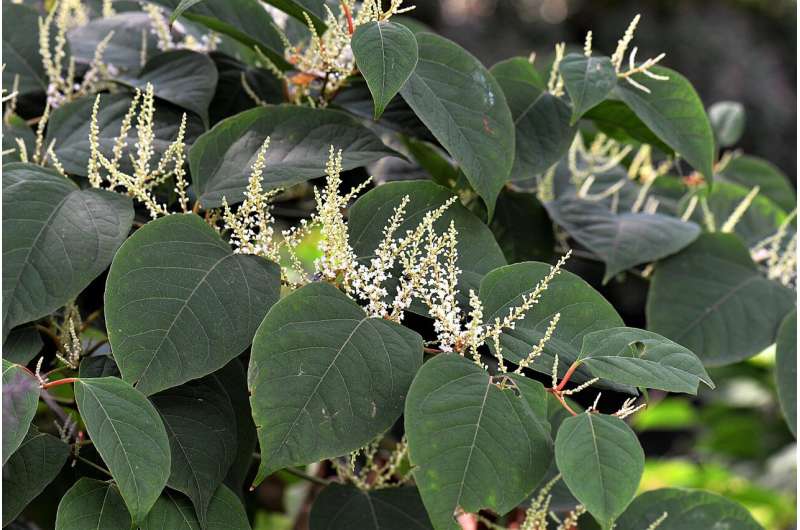Research provides insights into why Japanese knotweed is so highly invasive

Research published in New Phytologist into why the invasive plant Japanese knotweed is so successful at outcompeting native plants.
Japanese knotweed (Reynoutria japonica), which is native to eastern Asia and is a highly invasive plant species across Europe and North America, is known to damage infrastructure and ecosystems.
By comparing growth and reproduction traits of introduced plants with native plants, investigators discovered that introduced plants had gained the ability to reproduce faster by clonal propagation, a method of asexual reproduction that creates genetically identical copies of a plant. This could be one of the secrets of Japanese knotweed's success, and this knowledge will help improve methods to control it.
The study's methods will also be useful for other researchers looking to identify evolutionary responses of introduced plants to novel environments.
"Our international team included researchers from where Japanese knotweed is native (China and Japan) and introduced (Germany and U.S.) which enabled us to investigate plants from a large number of populations of this iconically global plant invader. This is a crucial approach to evaluate evolutionary changes, but is largely lacking for practical reasons," said corresponding author Christina Richards, Ph.D., of the University of South Florida.
More information: Shengyu Wang et al, General鈥恜urpose genotypes and evolution of higher plasticity in clonality underlie knotweed invasion, New Phytologist (2025). .
Journal information: New Phytologist , bioRxiv
Provided by Wiley




















